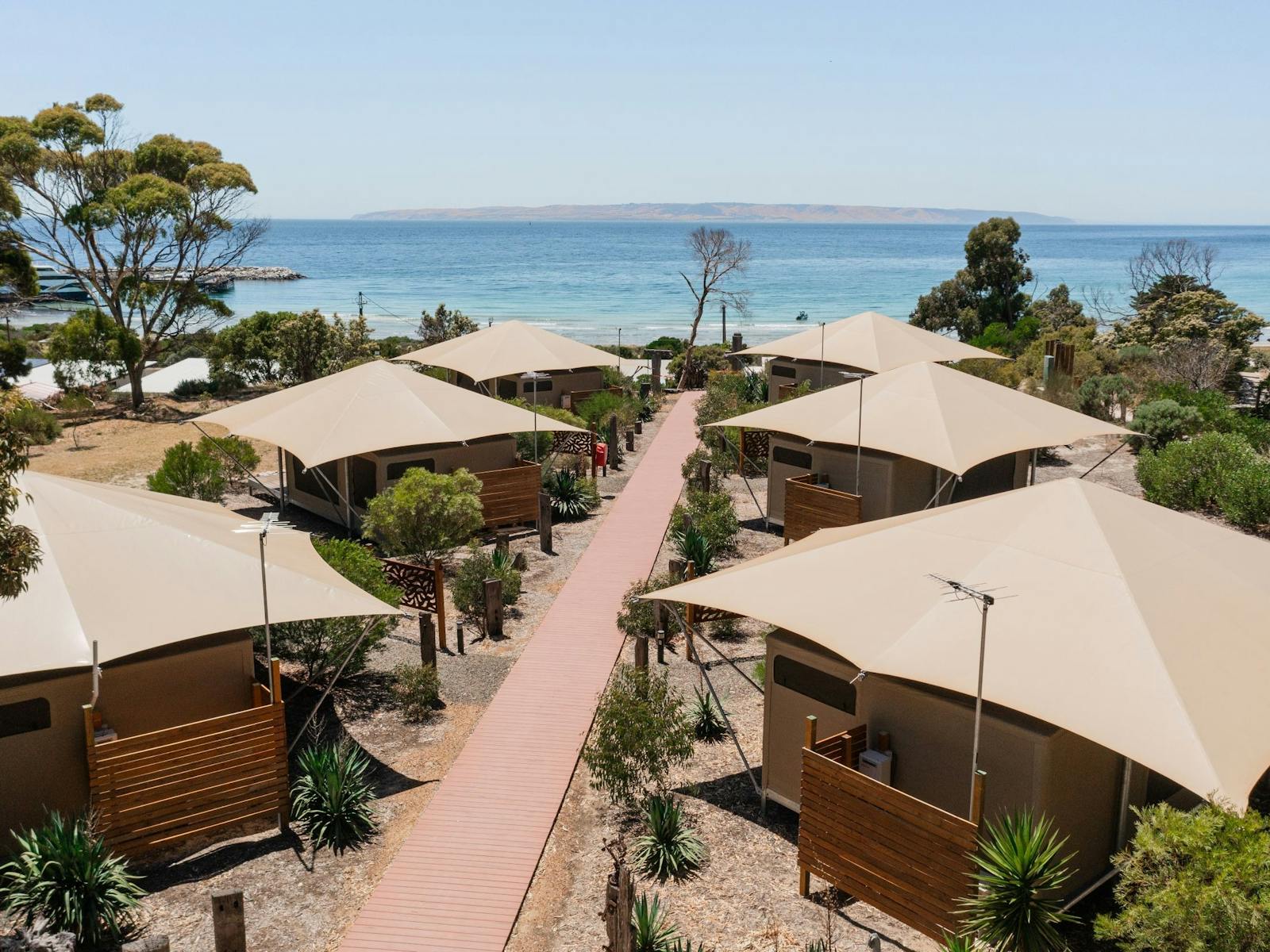There are some often talked about but rarely spotted wildlife on Kangaroo Island, and whilst the chances of seeing these species are extremely rare, if you are super keen to check them off your list, your chances will be better if going with an expert tour guide or joining a specific citizen science program, that way even if you don’t find that elusive animal, you will be contributing to the knowledge and protection of its species.
Platypus
Kangaroo Island contains the only wild population of Platypus in South Australia, be it introduced. Early in the 1920s concerned conservationists recognised Platypus were becoming endangered on the mainland of South Australia and consequently introduced them to Flinders Chase National Park.
The solitary and elusive Platypus swim in waterholes as they search for food at dawn and dusk. They have a smooth swimming action with a rolling dive as they chase their food.
Platypus Facts
The Platypus is a unique animal with a pliable duck-shaped bill, webbed feet and a broad, flattened tail. It is covered in dark brown, thick, fine, insulating fur. The Platypus uses its bill to detect electrical impulses emitted from its prey.
The Platypus is a carnivore, eating worms, insect larvae, flies, small fish, small shrimps (such as yabbies) and other water-borne species. It spends around 12 hours each day foraging for food.
The Platypus is restricted to freshwater streams and water bodies for their food. When not foraging in water, they rest and nest in a burrow in earthen banks, or occasionally in accumulated stream debris or in low, dense vegetation.
Kangaroo Island Dunnart
The Kangaroo Island Dunnart is listed as endangered, with the population thought to be less than 500 and entirely confined to the western end of the island. The 2019-2020 summer bushfires had a significant impact on the habitat and population of dunnarts with approximately 96% of their known habitat being destroyed.
The Kangaroo Island Landscape Board’s Dunnart Recovery Program aims to better understand where these native rodents are found on the island, identify immediate and long-term threats to their survival, and manage key threats to the species.
The Kangaroo Island Dunnart is a small carnivorous marsupial found only on Kangaroo Island, South Australia. It is the only known dunnart species on the island and has only been known to science for the last 50 years.
Dunnart Facts
The Kangaroo Island Dunnart is a small carnivorous marsupial, of similar size to a house mouse, its head-body length is 80 to 90 millimetres with a slightly longer tail. Females weigh less than an Australian 50 cent coin at 10-15 grams, while males weigh 20 to 25 grams.
The Kangaroo Island Dunnart has a slender pointed nose (or muzzle) and large ears. It has grey fur, which is darker on the back and lighter on the belly, a thin grey tail, and pale – almost white – fur on the hands and feet.
Like other dunnarts, the Kangaroo Island Dunnart feeds primarily on small animals, mostly invertebrates (spiders, beetles, ants, etc). Within its range, it occupies a variety of native vegetation, both mallee, and woodland, sheltering in grass trees (Xanthorrhoea), leaf litter, and holes in the ground.
Breeding occurs from late spring into summer; like other small dasyurids, males are unlikely to outlive the breeding season, while females may survive a second year. Dunnarts have up to 10 young per litter.
The species has only been known to science for 50 years, as originally it was thought to be the same species as a mainland variety. Historically, the main threat to the Kangaroo Island Dunnart was the clearing of native vegetation. Wildfires in the remaining native vegetation is a serious threat, as most records of the dunnart are from long-unburnt vegetation. Feral cats occur on Kangaroo Island and are also a threat. Overall, little is known about this species due to its relatively recent discovery.
Getting involved
As part of a joint initiative between National Parks and Wildlife SA and the Atlas of Living Australia, all of the camera trap photos from the Kangaroo Island Dunnart survey sites are now available online for citizen scientists to help look through and identify which animals are present.
If you would like to help and get involved with a bit of citizen science input, please head on over to DIGIVOL Bushfire Recovery Projects and help us ID some animals













